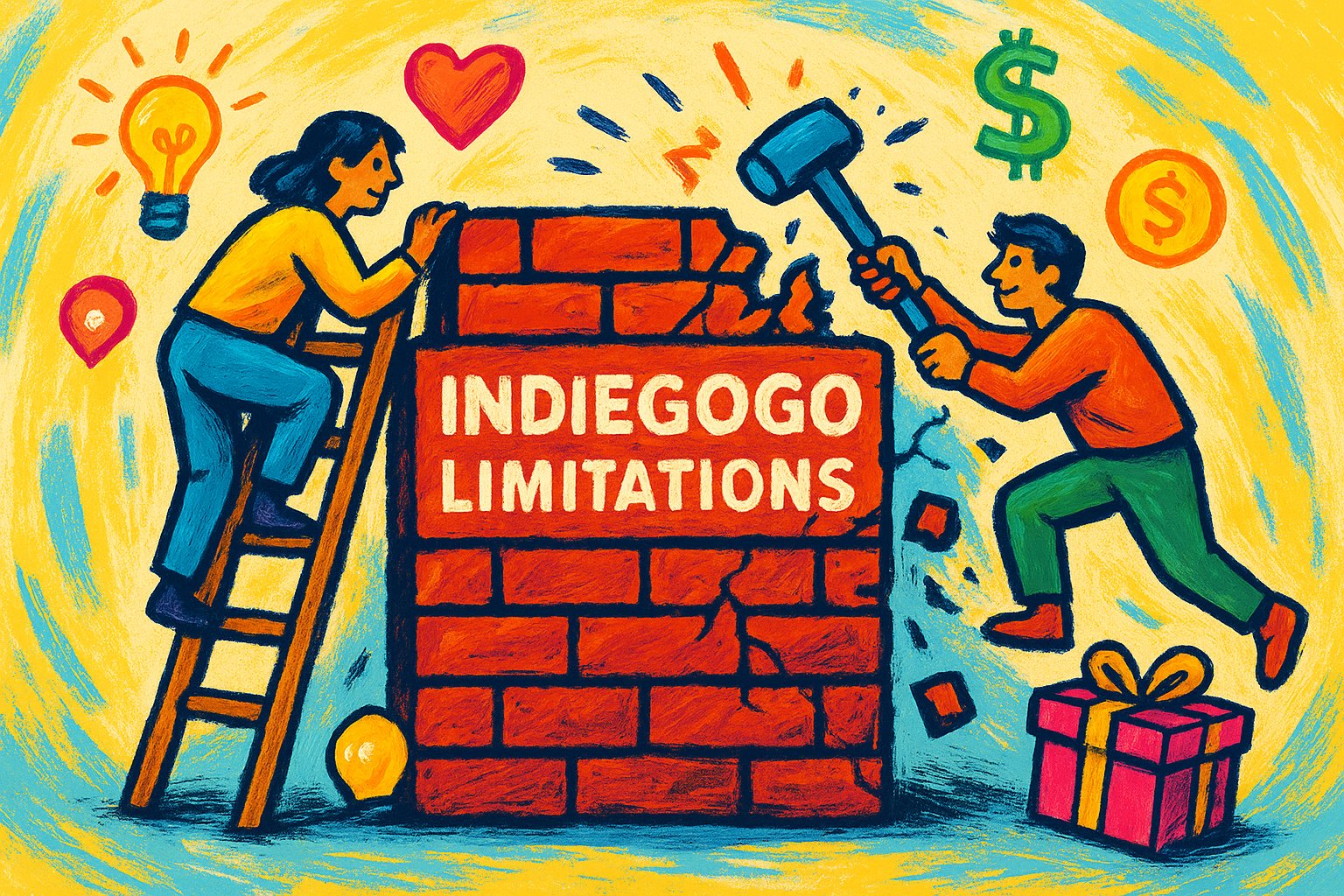Laying the Foundation: Why Fulfilling Rewards Is Non-Negotiable
When creators launch a Kickstarter campaign, they make more than a product pitch—they forge a promise. That promise, embodied in backer rewards, represents trust, excitement, and community investment. For many supporters, pledging early is an act of faith: they believe in the project’s vision, embrace the team’s passion, and accept some risk in exchange for a unique connection. Failing to deliver on these promises isn’t simply a logistical hiccup; it undermines the very foundation of crowdfunding. When creators fall short on reward fulfillment, they risk alienating not only individual backers, but entire networks of potential patrons. Word of mouth travels fast—social media posts, forum discussions, and online reviews can quickly undermine a campaign’s reputation, affecting future ventures. Conversely, fulfilling rewards on time and as described can transform backers into lifelong ambassadors, generating organic enthusiasm and building momentum for subsequent releases. In this opening section, we’ll explore why honoring backer rewards from Day One is essential, not just for immediate credibility, but for the long-term health of a brand and its community.
By understanding the deeper significance of reward promises, Kickstarter creators set themselves up for sustained success. The pledge process is more than a transaction; it’s a commitment between visionaries and supporters. Fulfilling rewards demonstrates respect for backers’ trust and resources. It conveys that the project team honors every dollar pledged, recognizing that each contribution fuels innovation. When creators deliver tangible value—whether it’s a limited-edition product, early-access prototype, or digital artwork—backers feel validated, validated feelings that evolve into enthusiastic word-of-mouth. In contrast, delays, unclear communication, or subpar quality can leave backers feeling misled and reluctant to support future campaigns.
Ultimately, a Kickstarter campaign’s viability hinges on the integrity of reward fulfillment. By centering reward promises in the project’s DNA—planning for logistics, anticipating challenges, and prioritizing transparent communication—creators demonstrate that they value backer relationships as much as they value product design. This foundational commitment sets the stage for every subsequent phase: from crafting realistic reward tiers to navigating unexpected obstacles and celebrating successful deliveries. Let’s dive into the essential steps that keep reward promises alive and cultivate a thriving, trust-based community.
Crafting Realistic Reward Tiers That Reflect Feasibility
A successful Kickstarter campaign begins with reward tiers that strike a balance between aspiration and practicality. Creators often gravitate toward extravagant stretch goals and elaborate package deals, but overzealous promises can backfire when production realities emerge. Before finalizing reward structures, conduct thorough cost analysis: factor in manufacturing, packaging, shipping fees, and potential import taxes. For instance, a handcrafted wooden prototype might cost more than initially estimated when bulk ordering requires specialized tooling or finishes. By outlining every expense—materials, labor, and logistics—and adding a buffer for unforeseen costs, creators can set pledge amounts that ensure profitability and timely delivery.
When tiers are grounded in realistic timelines and budgets, backers receive clear expectations. Describe what each reward includes, emphasizing quality standards without exaggeration. If early bird specials are limited, explicitly state quantities and cutoff dates. Creators should avoid vague language such as “rewards shipping in summer” and instead commit to a specific month or quarter. Detail any customization options—color choices, engraved names, or bonus content—only if they can be fulfilled without compromising overall schedules. In essence, reward tiers should inspire without stretching capacity. A modest set of well-defined options often outperforms a convoluted tier list that confuses backers and strains production lines. By crafting realistic, transparent reward tiers, creators lay the groundwork for a smooth fulfillment process that keeps promises intact.
Aligning Manufacturing and Fulfillment Plans Early
Once reward tiers are established, the next critical step is aligning manufacturing and fulfillment plans with campaign goals. Many creators underestimate how swiftly production complexities can escalate once pledges roll in. Securing reliable manufacturing partners before the campaign concludes mitigates this risk. Engage in detailed discussions with potential suppliers to understand lead times, minimum order quantities, and quality control protocols. Visit factories in person, if possible, or request sample runs to inspect craftsmanship. By previewing prototypes and scrutinizing manufacturing workflows, creators can identify potential bottlenecks—such as custom molds taking longer than expected or rare materials facing supply shortages.
Simultaneously, explore fulfillment options for packaging, warehousing, and shipping. A fulfillment center specializing in crowdfunding projects can consolidate tasks—kitting, labeling, and dispatch—allowing creators to focus on product refinement rather than logistics. Investigate shipping carriers’ rates for domestic and international delivery, noting any restrictions or fluctuating fuel surcharges. For global backers, research customs regulations and import duties to avoid unexpected charges that could derail timelines. Establish a contingency fund to cover last-minute expenses such as expedited shipping or additional labeling. By aligning manufacturing and fulfillment plans early—ideally before launch—creators minimize surprises and ensure that reward promises remain feasible even as pledge volumes scale.
Communicating Transparently with Backers
Transparent communication forms the bedrock of backer trust. Throughout the campaign and the subsequent fulfillment phase, timely updates are non-negotiable. Backers appreciate when creators share candid insights—production milestones, prototype revisions, or even minor setbacks. When a project team acknowledges a two-week delay due to a material shortage, for example, backers can adjust their expectations and appreciate the honesty. Conversely, silence or vague assurances compound frustration and breed speculation; anxious supporters may resort to public forums, magnifying perceived issues rather than focusing on progress.
Craft a consistent update cadence: commit to weekly or bi-weekly posts on Kickstarter’s update page, supplemented by email notifications for major milestones or changes. In each update, highlight specific achievements—such as completing the first production run or receiving safety certifications—and outline steps ahead, complete with tentative dates. Include photos or short video clips whenever relevant, as visual transparency reinforces verbal explanations. Encourage backers to submit questions via comment threads or dedicated email channels, and respond promptly; active dialogue fosters community engagement and diminishes uncertainty. By maintaining open communication channels from Day One, creators demonstrate accountability, reassure backers that progress is underway, and fortify the collective confidence that reward promises will be honored.
Navigating Unexpected Challenges with Agility
No matter how meticulous the planning, unexpected challenges can and will arise. A crucial aspect of keeping reward promises lies in preemptively identifying risks and outlining mitigation strategies. For instance, a sudden surge in raw material prices—driven by global events—may inflate production costs overnight. Alternatively, a critical piece of manufacturing equipment could malfunction, stalling assembly lines. When such scenarios emerge, creators must pivot swiftly: renegotiate supplier contracts, source alternative materials, or adjust packaging to maintain quality without exceeding the original timeframe.
Agility also extends to regulatory hurdles. If a creator develops an innovative wearable device, new safety regulations or certification requirements might arise during the campaign window. Staying informed about industry standards and proactively consulting with certification agencies ensures that compliance doesn’t transform into a last-minute roadblock. When unforeseen delays are unavoidable, transparent communication—paired with concrete revised timelines—can soften the blow. Offer backers a small token of appreciation for their patience, such as a downloadable art sheet, a personalized thank-you video, or a discount on future products. These gestures go a long way toward reinforcing goodwill and underscoring that the team genuinely values backer support.
Leveraging Stretch Goals Without Overextending
Stretch goals can inject excitement and momentum into a Kickstarter campaign, rallying backers to pursue higher funding targets for enhanced features or exclusive bonuses. However, many creators succumb to the temptation of promising elaborate add-ons without fully assessing feasibility. While a feature-packed next iteration might sound irresistible, failing to evaluate costs and timelines can result in broken promises and tarnished reputations. The key is to design stretch goals that complement existing plans rather than overhaul them. For example, offering a color variation of a product typically requires minimal design changes compared to introducing an entirely new component like a Bluetooth module.
When setting stretch goals, calculate incremental expenses—tooling modifications, extra materials, and additional labor hours. Ensure that the margin from increased funding covers these costs plus a buffer. Clearly communicate to backers that stretch goal activations hinge on specific funding thresholds; avoid vague language that implies automatic fulfillment regardless of backer volume. In updates, track progress toward each stretch goal, explaining in concise terms what each milestone unlocks and why it matters. Backers feel empowered when they understand that collective contributions directly translate into tangible project enhancements. By selecting stretch goals that amplify value without overextending resources, creators preserve their ability to keep promises intact while sustaining campaign momentum.
Celebrating Delivery and Gathering Feedback
When the day arrives and backer rewards begin to ship, it’s a pivotal moment for cementing trust and community goodwill. Rather than treating delivery as a mere logistical endpoint, frame it as a celebratory milestone. Announce shipping waves with enthusiasm: describe how many packages are en route, share snapshots of final assembly, or feature testimonials from team members handling the first shipments. Encouraging backers to share unboxing photos on social media—with a dedicated campaign hashtag—generates buzz and modernizes word-of-mouth. Seeing fellow supporters receive their rewards not only validates the project’s authenticity but also motivates those still awaiting delivery to remain patient.
Simultaneously, solicit constructive feedback from early recipients. Include a brief, personalized note inside each package inviting backers to complete a short survey or join a private feedback forum. Ask about their impressions of quality, packaging, and user experience, and address any concerns promptly. This feedback loop equips creators to rectify minor flaws before full-scale product rollouts and demonstrates a commitment to continuous improvement. By celebrating each delivery wave and actively seeking backer input, creators reinforce that fulfillment is not a conclusion but an ongoing dialogue that shapes future endeavors.
Building Long-Term Trust Beyond Kickstarter
For many creators, a Kickstarter campaign represents only the first chapter of a broader brand narrative. Maintaining trust beyond initial reward delivery is vital for sustained success. Once backers receive their rewards, continue engaging them through newsletters, social media updates, or exclusive community events. Share updates on retail launches, feature expansions, or subsequent crowdfunding campaigns. By keeping backers informed, you transform one-time supporters into loyal advocates who champion your brand across wider networks.
Furthermore, treat post-campaign sales and offerings with the same level of transparency cultivated during fulfillment. If new product lines are launching, offer backers priority access or special discounts as a token of gratitude for their early support. Include them in beta programs for future projects, ensuring they remain integral to your creative journey. When unforeseen issues arise—perhaps a manufacturing glitch delays restocking—maintain the same open communication ethos: acknowledge the problem, outline corrective actions, and provide revised timelines. This consistency signals that your commitment to backers extends well beyond a single project, constructing a durable foundation of trust that paves the way for future innovations.
Each Kickstarter campaign is a two-way street: creators promise to deliver unique products, and backers pledge resources and enthusiasm. By crafting realistic reward tiers, aligning manufacturing plans, communicating transparently, navigating challenges, and celebrating delivery, creators honor that mutual agreement. In doing so, they transform individual pledges into lifelong relationships, ensuring that every backer feels valued, heard, and eager to support the next bold idea.




